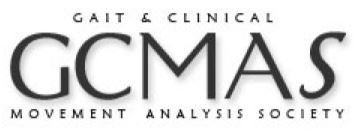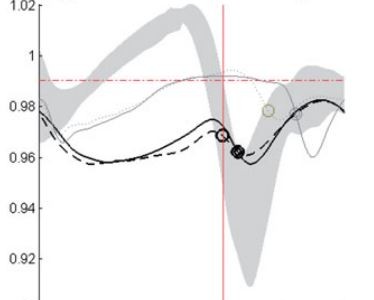Mike Schwartz presents at Gait & Clinical Movement Analysis Society Annual Conference:
Dynamic motor control predicts treatment outcome for individuals with cerebral palsy
Portland, OR (March 18-21, 2015)

Hwan Choi presents at Gait & Clinical Movement Analysis Society Annual Conference:
Evaluating changes in gastrocnemius length with different orthoses using musculoskeletal modeling
Portland, OR (March 18-21, 2015)

Ben Shuman presents at Gait & Clinical Movement Analysis Society Annual Conference and is awarded Best Paper:
Repeatability of muscle synergies between days for unimpaired individuals and individuals with cerebral palsy
Portland, OR (March 18-21, 2015)

Journal article accepted in Disability and Rehabilitation:
Using musculoskeletal modeling to evaluate the effect of ankle foot orthosis tuning on musculotendon dynamics: a case study.
This case study examines the influence of an ankle foot orthosis footwear combination (AFO-FC) on musculotendon lengths and gait kinematics and kinetics after right thrombotic stroke resulting in left hemiplegia. Methods: Gait analysis was performed over three visits where the subject walked with an AFO-FC with two shank-to-vertical angle (SVA) alignments, a posterior leaf spring AFO (PLS AFO), and shoes alone. Biomechanical and musculoskeletal modeling was used to evaluate musculotendon lengths, kinematics, and kinetics for each condition. Results: The AFO-FC improved walking speed and non-paretic kinematics compared to the PLS AFO and shoes alone. The operating length of the paretic gastrocnemius decreased with the AFO-FC improving knee kinematics in swing, but not stance. As the SVA of the AFO-FC was reduced from 15° to 12°, internal ankle plantar flexor moment increased. Conclusions: Musculoskeletal modeling demonstrated that the AFO-FC altered gastrocnemius operating length during post-stroke hemiplegic gait. Using these tools to evaluate muscle operating lengths can provide insight into underlying mechanisms that may improve gait and guide future AFO-FC design. PDF

Kat Steele presents at Biomedical Engineering Society and is awarded Outstanding Presentation, Neural Engineering Track:
Predicting metabolic costs of pathologic gait in cerebral palsy
San Antonio, TX (October 22-24, 2014)